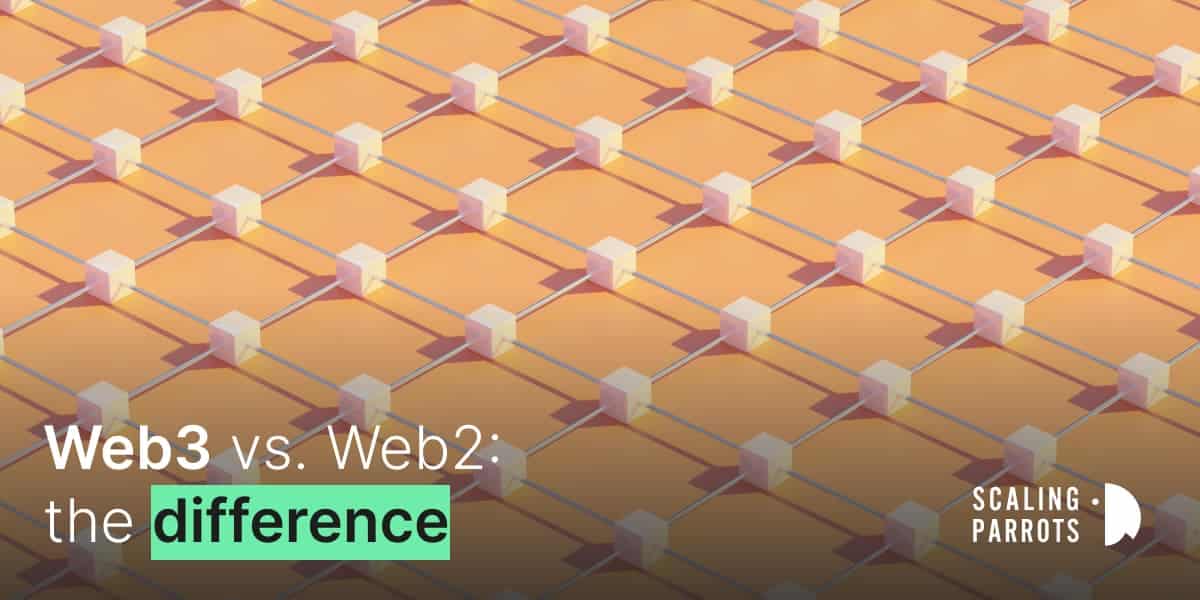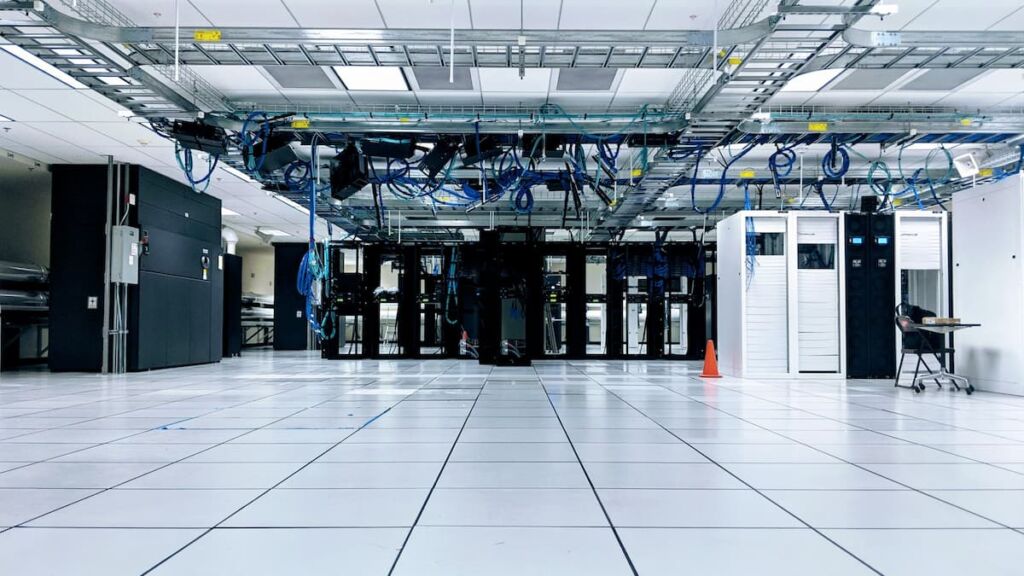
The rise of cryptocurrencies has alerted many people to the benefits of the Blockchain: a set of technologies capable of forever altering the world of financial transactions.
The Blockchain has many applications that are unrelated to online trading. It is, for example, involved in constructing a new hierarchical-free network.
It is no coincidence that the Blockchain, along with peer-to-peer networks and I2P software (Invisible Internet Project), is the foundation of the so-called Web3: an Internet concept based on decentralization, anonymity, and security.
Web3 is not to be confused with Web 3.0. The latter is an evolution of the previous Web 1.0 and Web 2.0, aiming to create semantically linked content.
Web 3.0 aims to enhance the existing network by making it more connected, engaging, and interactive. Web3, on the other hand, wishes to reinvent the internet by fundamentally altering the assumptions that have previously given rise to pages, sites, and platforms.
Web3 is a web revolution that has the potential to provide numerous benefits to users. At the same time, there are risk factors to consider: potential issues related to individual experience and global energy consumption.
But what exactly is Web3, how does it work, and what is the difference between Web3 and Web2? That’s what this article will discuss; read on to find out.
What is Web3
Definition: Web3 is a Blockchain-based, decentralized, and open internet. The term “web3,” first used by Ethereum co-founder Gavin Wood in 2014, refers to a decentralized version of the internet that would be created by taking away users’ control from Web2 giants like Amazon and Facebook.
Web3 is a more recent evolution of the Internet concept. A completely decentralized web concept based on new protocols and, most importantly, Blockchain technology.
Some argue that Web3 is the actualization of Web 3.0. In fact, the two concepts are related, but they have distinct meanings. Web 3.0 envisions a network marked by increasingly precise metadata capable of specifying the semantic context of each individual page.
The underlying intention of Web3 is to fundamentally alter the current functioning of the Web, both in terms of content use and the hierarchical relationships that serve as the foundation of the internet.
To date, the internet’s structure sees a clear distinction between client and server: two terms that are likely unknown, or at least unclear, to anyone who does not have a certain level of computer skills.
Web3 would allow us to change how the internet works by removing the distinction between client and server.
- The client is the program that allows a computer to interact with the network, as in the case of certain browsers. The client is frequently referred to as the device that hosts such software. In other words, it is the computer of the user.
- In contrast, a server is a computer that hosts network services and resources. It is a device that can store thousands of Internet pages’ worth of data. The servers are the managers and custodians of sensitive data and have a hierarchically superior position compared to the clients.

Web3 wishes to fundamentally alter this hierarchy in which only one party controls the information. And the Blockchain itself has the potential to transform the criteria by which data is managed completely.
Blockchain requires storing information in multiple copies and distributing it via a peer-to-peer computer network. This set of technologies could thus move beyond the simple role of cryptocurrency databases to become the foundation for a new network.
How does Web3 work
Decentralization is the cornerstone of Web3, and it is here where Blockchain technology first appears. Web applications can communicate with users because the Blockchain can function as a decentralized database.
Users can act in such a way that their actions are recorded in the Blockchain so that we always have every user action’s history and a fictitious identity connected to that user.
Encryption enables users to securely capture, transmit, create, and edit any content inside the app. As a result, every action in a Web3 application would be a Blockchain transaction that would be recorded.
It was necessary to build a bridge connecting both worlds to enable integration between the Web and the Blockchain. The interfaces and logic for this bridge are designed using well-known web technologies like JavaScript, allowing users to interact with the application from their browser or smartphone.
On the other hand, smart contracts from the Blockchain are able to design and oversee all of the Blockchain logic.
In any case, smart contracts are frequently used to automate the carrying out of an agreement so that all parties can be confident in the outcome immediately, without the need for an intermediary or wasting time.
With the help of Blockchain technology, decentralized storage, and self-sovereign identity in a community-driven setting, Web3 aims to reclaim data ownership from Web2 giants and give it back to users. Users will ultimately decide who has access to what data.
Cryptocurrency wallets like MetaMask, Venly, or TrustWallet, where users store the keys to all of their data and identities, have made this possible. In this way, they can interact with other Blockchain apps and manage who has access to their data.
Similar to using a Facebook account, logging into other apps with a cryptocurrency wallet is secure, and all your data is yours to keep and manage.
What is Web2
Web2, also known as the second generation of the web, is the dominant web of our day, having arisen in 2004 and continuing to thrive.
It is known as the read-write web because it allows for user participation, which is a vast improvement over the one-way communication provided by Web 1.0.
It helps websites generate user-generated content, improving usability and interoperability for end users and transforming it into the participatory social Web.
Web2 introduced new forms of engagement to static websites that previously merely pushed information. Blogs grew popular, and social networks such as MySpace, Friendster, and, eventually, Facebook appeared.
The social connectedness and interactivity of Web2 have resulted in the rise of social media platforms such as Facebook, Twitter, YouTube, and Discord, where users may publish material that other users can watch and provide feedback on.
As a result, the internet has spread to mobile devices such as iPhones and Androids, resulting in the domination of apps such as WhatsApp, Instagram, Facebook, and Twitter.
CSS, or Cascading Style Sheets, is another feature of Web2. In the early days of the internet, developers had to design web pages using tables, which made controlling the layout challenging.
CSS became more widespread and powerful in the 2000s, allowing for intricate layouts that altered the appearance of the Web.
As the use cases of Web2 expanded from communication and information collecting to e-commerce and beyond, the number of users climbed to billions, driving the development of user-generated content. As a result, Web2 evolved into “web as a platform,” around which software applications were developed.
Differences between Web3 and Web2
Web2 and Web3 are related technologies with similar origins, but they solve problems in quite different ways.
The primary distinction is that Web2 is concerned with reading and publishing content, whereas Web3 is concerned with creating a decentralized version of the internet. The latter is far superior, utilizing technology to promote information exchange among online users while also improving security.
While Web2 attempts to connect individuals, Web3 combines this data to provide meaning while improving trust. This is the result of decentralization. Additional differences between Web3 and Web2 are outlined below:
- Ownership of the content: With Web2, the network takes over information storage, causing access challenges and worries about the privacy and security of online data. Web3 addresses this issue by allowing data to be transferred to multiple locations at the same time.
- Speed: Web2 transfers are much faster than Web3 transfers. Web2 searches for information stored in a fixed location, usually on a single server, using HTTP in unique web addresses. Web3, on the other hand, allocates ownership to a large number of people (decentralization).
- Applications: Podcasts, social bookmarking, blogs, RSS feeds, and video sites are examples of Web2 applications. Web3 integrates dApps, virtual worlds, and 3D portals powered by AI and machine learning.
- Technology: AJAX, JavaScript, HTML5, and CSS3 are the most common Web2 technologies. Web3 is powered by ML, deep learning, semantic Web, and decentralized technologies.
- Payments: Web 2 currency payments are made in fiat money. Government-issued money, such as the US dollar, is used during transactions. Web3, on the other hand, funds transactions with cryptocurrencies such as Ethereum or Bitcoin, which are encrypted digital currencies.
Benefits of Web3
Let’s examine some of Web 3 benefits to the public now that we understand what it is all about:
- Reliability
Overall, this network will increase the freedom of creators and users. Utilizing decentralized networks will ensure that the latter always retain control over their online data. The decentralized nature of the upcoming internet, which removes the possibility of a single point of failure, is also expected to make it more dependable.
- Personalization and usability of the internet
Because this web form can comprehend our preferences, we can customize our browsing experience. This will also enable us to navigate more efficiently.
It doesn’t have to be governed by just one thing. It’s possible that the biggest businesses no longer have total control of the internet. Decentralized apps cannot be censored or otherwise restricted as a result.
- Security
It is defined as more than just the ability to withstand flaws, attacks, or censorship. The Blockchain uses encryption to protect the information stored in its digital records.
Cryptography employs various techniques and technologies targeted at concealing and protecting various items and messages. Without the necessary access keys, encrypted data is virtually unavailable to everyone.
At this point, it is important to emphasize that the information contained in the Blockchain is not moved to external servers or computers. On the contrary, they are always available to their owners.
However, traditional Blockchain encryption is not confined to ensuring information security.
- Allow sellers to market more effectively.
Sellers will use Blockchain and artificial intelligence to understand better our purchasing demands and display products and services we are interested in purchasing. This will enable us to view more relevant advertising that is more likely valuable to us.
- Fewer interruptions
Users will not have to worry about service outages or account suspensions due to decentralization because data will be kept in distributed databases.
Will Web3 replace Web2?
This is a fascinating question. History teaches us a great deal about this. Consider a couple of these examples.
Diners’ Club distributed the first credit card in 1950. Even though Visa was launched in 1958, 88% of US consumers still use cash regularly. Did a credit card take the place of cash? The credit card has been in use for 72 years.

Although mainframe computers were introduced in the 1950s, enterprises still rely on and use them.
In the late 1990s, Windows UI applications were introduced. Many businesses are still using Windows applications more than two decades later.
Tesla was founded in 2003, and 20 years later, only about 2.2% of cars are fully electric.
As the preceding examples show, while Web3 may be the new kid, Web2 and centralized systems will be around for decades. In fact, cloud computing is still evolving and growing, and it hasn’t finished yet. We will still have to experience the cloud boom before we see a full Web3 boom.
Conclusion
The Web3 vision of a new, decentralized Internet that prioritizes data control and privacy is slowly becoming a reality.
Many Web3 solutions that attempt to replace Web2 entities have already been developed. While Amazon Web Services and Microsoft Azure reign supreme for website hosting on Web2, Web3 has alternatives such as InterPlanetary File System (IPFS) and Skynet.
Finally, while Web3 appears to be an inevitable revolution, the transition from Web2 to Web3 will most likely take place over a relatively long time horizon. Given current trends, we could potentially reach 1 billion Web3 users by 2031. (according to a16z).
One thing is certain: as this transition continues, how we relate to the internet and other people will fundamentally change.
See you soon,
Scaling Parrots
